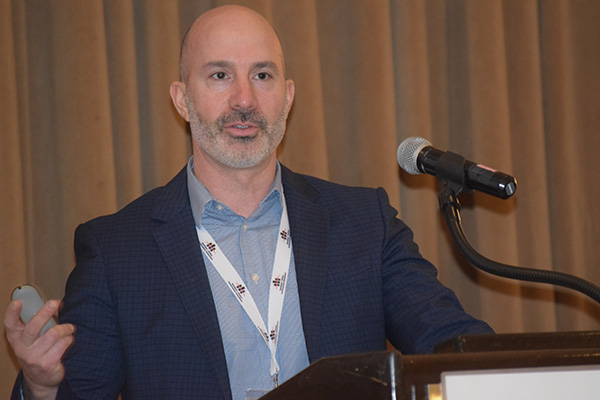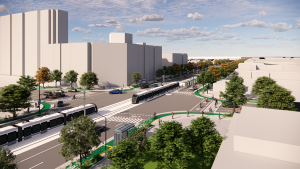A Metrolinx executive told a Hamilton construction audience recently the agency is making solid progress on its Hamilton LRT project version 2.0 with early works begun and significant details now nailed down, but two big ones still unconfirmed – cost and completion date.
Jason Fellen, vice-president for Hamilton light rail transit for the agency, offered members of the Hamilton-Halton Construction Association an update on the complex 14-kilometre project during the HHCA’s 2024 forecast event. He jokingly referred to the first iteration of the project, cancelled by the Doug Ford government in December 2019, as version 1.0. The original price tag attached to that project was $1 billion but the government, fearing major price creep, pulled the plug.
When the project was resurrected in 2021 with a new federal funding pledge, the cost was pegged at $3.4 billion.
Fellen told the Hamilton builders Metrolinx has chosen to proceed with an Alliance model for package one project procurement due to the build’s abundance of risks, mainly linked to the multitude of aging and newer utilities that will have to be relocated. Afterwards, in an interview, he said Metrolinx will be “smart and thoughtful” in managing the project.
Asked how confident he was about completing the job for $3.4 billion, Fellen said, “I’ll be honest, all budgets are challenging to establish. It’s hard to predict inflationary pressures. It’s hard to predict what market conditions will look like from the time where you establish that budget to the time you go to the market.
“Ultimately will we have cost pressures, like all projects do? I suspect we will.”
A statement from Metrolinx confirmed, “LRT construction timing and phasing are being finalized.”
The agency will proceed with the project’s two main packages following the early works stage, which includes property acquisitions, design and demolitions. Package one, Civil Works and Utilities, is highly fraught with risk and represents approximately half of the construction value, Fellen said. The Alliance partner has not yet been selected for that phase.

In package one, third-party assets will be designed, constructed, commissioned and handed over to stakeholders, followed by the major works of constructing private and public utilities, civil structures such as bridges and grade separations, roads and urban realm works, and relocation and renewal of horizontal utilities.
“No matter how much due diligence you do, you’re going to find things that you didn’t anticipate,” said Fellen. “And so, flexibility and adaptability in these early stages of that work are going to be critical to help us be successful.”
Fellen said the procurement model has not yet been decided upon for package two, which includes the rail infrastructure and systems.
The Alliance model offers decision-making on a collaborative basis where the engineer, constructor and owner are on an equal playing field and decisions are consensus driven, Fellen said.
“It looks to share risk between all parties,” he explained. “And ultimately, if the product is successful, and the goals and objectives are met, everyone benefits and there’s a big gain shared.”
Price is not a consideration when selecting an Alliance partner, Fellen said, and in fact the target price is only determined after a development phase, when the partners sit down and consider all the risks.
“What we do is, we look for the right partners, skill set, experience, the right attitude, the right culture, the right collaborative mindset to join us on what will be an extensive journey in a particularly challenging environment,” he said.
“Once we have our Alliance partners on board, we’ll get into the design process and we’ll refine and examine exactly the approach to segmentation and the work and the timelines.”
Further complicating the project is that there have been numerous policy changes and new initiatives on the city’s part, such as Complete Streets and Vision Zero, so due diligence originally undertaken on version one of the project may no longer be relevant for version two.
“Of course, recently the decision to convert Main Street to two-way obviously has a significant impact on what we were planning,” said Fellen.
The rail corridor is only 20 metres wide in most spots, with 10 metres allotted to rail infrastructure and the other 10 to utilities.
Major city projects currently being undertaken in conjunction with LRT early works include the relocation of watermain infrastructure at Sherman Avenue, begun last October, and the relocation of electrical utilities beginning at Rebecca Street, started a month later.
Early this year, City of Hamilton watermain works at Nash Road and Wentworth Street, and additional electrical utility works at Maple Avenue, are expected to begin.
Follow the author on X/Twitter @DonWall_DCN.




Recent Comments
comments for this post are closed